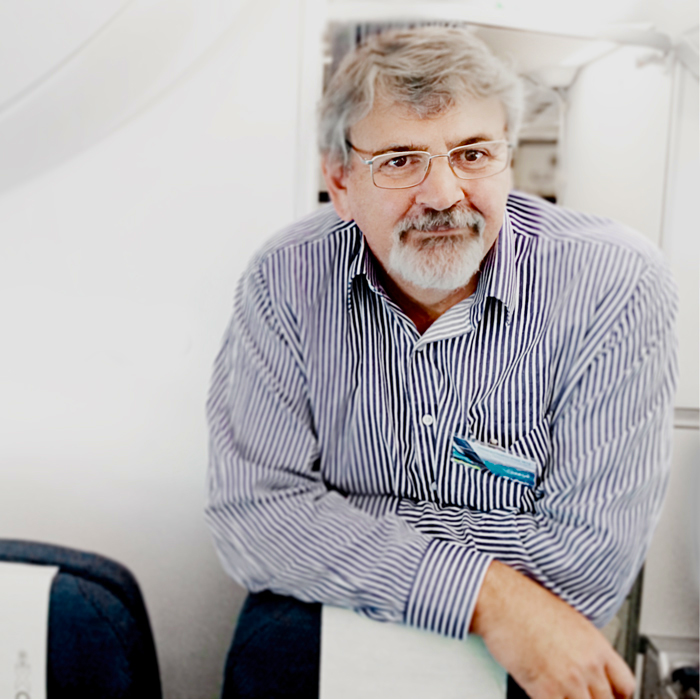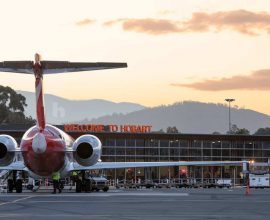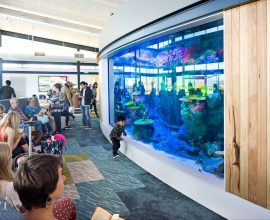Scratching the surface on drone potential
The Civil Aviation Safety Authority’s hard-fought campaign to convince the growing number of drone users to stay away from airports and aircraft appears to be paying off.
While the number of drones continues to increase, CASA chief executive Shane Carmody told the Australian Airports Association national conference in Brisbane that the volume of safety reports about conflicts between drones and aircraft appeared to have plateaued.
Carmody said drones, regulatory reform and improved service delivery were among challenges facing CASA as continues to deal with a busy agenda.
He believed there was probably more than 150,000 drones in Australia and almost 10,000 drone pilot licences.
“There’s no doubt in my mind that we’ve only scratched the surface of opportunity,’’ he said, pointing to a successful trial to use drones to deliver food and non-prescription medicines in Canberra.
“We’re hearing more and more from companies interested in pushing this envelope,’’ he said.
“In fact, just this morning there was an article in the Financial Review about “flying ride-sharing vehicles” transporting workers between the central business district and regional centres or airports – within the next five years.
“While there is a lot to do in this area to ensure these operate safely, I can’t even begin to imagine the potential this type of service will unlock.’’
Carmody said he hoped the apparent levelling off of drone incidents stemmed at least in part from the authority’s strong education campaign, which included advertising, a drone safety animation and notices in drone packaging aimed at alerting users to restrictions
“There is a lot more to do and an awful lot of focus goes into this,’’ he said. “But if I (move) for a moment away from the security and privacy issues, none of which are in my areas of accountability, on the safety issue I’m hearing less than I did 12 months ago.
“But essentially with drones it’s a brave new world and there is an enormous amount to do.’’
On regulatory reform, Carmody said CASA had been working hard on finalising its regulatory program after more than two decades
Six flight operations regulations known as “the six-pack” – Parts 91, 119, 121, 133, 135 and 138 — were on track to be made this year. Part 149 on self-administering organisations was made earlier this year.
He said his aim, politics notwithstanding, was to get the remaining lower priority regulations through early next year.
“So that’s seven on track for this year with about three to go and then the job will be done,’’ he said. “We’re pushing pretty hard to get that done because it changes people’s perceptions of us as an organisation because we deliver.’’
The CASA boss said a key transformation now underway related to how CASA managed and improved its surveillance, including the 320 aerodome operators (about 195 certified aerodromes and 127 regulated aerodromes).
He said there had been a been minor drop for the quantity of registered aerodromes and a steady increase in the requests for new certifications, mostly from the mining and resources sector.
CASA also planned to have another look at “Sector Risk Profiles” (SRPs) that aim to identify sector-specific risks.
These presented stakeholders with risk profile compiled using the authority’s data as well as information from the Australian Transport Safety Bureau and the Bureau of Infrastructure, Transport and Regional Economics.
“At the moment the document is a fixed document in time,’’ he said. “So we’ll have another look at the aerodrome SRP sometime next year as the current one has probably almost reached its intended life.
“But ultimately it will be a living sector risk profile— this is what I intended to achieve across all sectors – so it can dynamically updated.
“This is something my information technology systems don’t support at the moment but certainly will.’’
The SRP would also be expanded to include unregulated aerodromes but CASA would try to align it with the post-implementation review of PART 139 early next year, Carmody said.
Also established this year was regular risk profiling for airspace that would soon be developed to include an ongoing risk analysis for aerodromes.
“We have the capacity to conduct surveillance risk profiling now on a monthly basis, but we hope to increase that to a daily or weekly soon,’’ he said.
The CASA boss said the authority was now grading surveillance differently, switching from non-compliance notices to safety alerts , safety findings or safety observations .
He said improved options for information sharing meant members of the aviation community could ask copies of the sector analysis relevant to them which outlined the top five factors from CASA’s Authorisation Golder Performance Indicator tool.
A National Surveillance Selection Process established in July also provided a systematic national approach to prioritising and scheduling planned surveillance.
It would be one of the pillars of surveillance along with national sector campaigns, CASA’s response to incidents and accidents and regulatory services.
“Put simply, we have 1032 surveillance events planned for the financial year – across all disciplines and across our entire area of responsibility,’’ he said.
“This is effectively looking more deeply into how we plan and conduct our surveillance activities.”
For aerodromes, Carmody said the NSSP would provide CASA with an opportunity to apply a consistent, risk management approach to surveillance.
It would allow it to schedule surveillance at least 12 months ahead and it was looking to couple it with a mobile client tool to establish greater standardisation of surveillance events and data.
Carmody also signalled he would oppose any move to water down CASA’s role to put commercial considerations ahead of safety.
“In our current form, we were established with our focus being first and foremost on safety,’’ he said.
“This stemmed from the tragic Monarch and Seaview accidents in 1993 and 1994 – a long way in the memory for some but for many of us not that far back at all – when the Civil Aviation Authority … was found to have failed in its safety responsibility because it placed commercial considerations ahead of safety of passengers.
“I will do my utmost while I’m in the job to ensure that this never occurs again.
“Our key role is the safety regulation of civil air operations in Australian territory and the operation of Australian aircraft outside Australian territory.
“And the Act that I have sitting on my desk says that in exercising my powers and performing my functions, CASA must regard the safety of air navigation as our most important consideration.
“And that remains our focus”
By Steve Creedy
About Steve Creedy
 An award-winning journalist, Steve began covering aviation in the United States in the early nineties before returning to Australia later that decade and editing The Australian’s aviation section for 17 years. He is editor of Airline Ratings and has co-authored books on industry initiatives aimed at reducing greenhouse emissions.
An award-winning journalist, Steve began covering aviation in the United States in the early nineties before returning to Australia later that decade and editing The Australian’s aviation section for 17 years. He is editor of Airline Ratings and has co-authored books on industry initiatives aimed at reducing greenhouse emissions.
Steve has joined the AAA to write interesting and informative editorial on the aviation industry.





